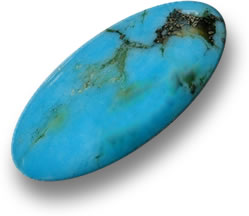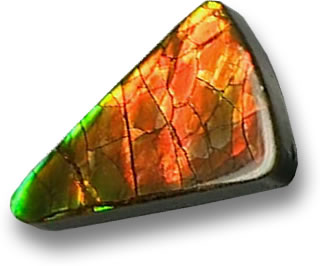Your Details
Your Details
|
Reviewed By Andreas Zabczyk
Gemstone Treatments: Stabilization and ImpregnationWhen it comes to the treatment of gemstones, the very first documentation was presented thousands of years ago by Pliny the Elder, commander of the early Roman Empire, renowned author, naturalist and philosopher. The process of treating and enhancing precious gems is an ancient tradition that dates back thousands of years and is still practiced today. Amazingly, many of the most popular gemstone types available today would not even exist if it was not for gemstone enhancements, including Swiss and London blue topaz. In addition, some gemstones would be so rare that only a handful of faceted specimens would exist without enhancements, this includes sapphire, ruby and emerald. 
Natural Stabilized Turquoise
Gemstone enhancements allow gems like tanzanite, sapphire, ruby, blue topaz and emerald to be more readily available. Without gem treatments, there would not be nearly as much ruby and sapphire available on the market as there is today. Blue topaz would be virtually non-existent, and most emeralds would have been discarded at the mines. Simple heat treatment is the most routine gemstone enhancement used today. Other common gem treatments include oiling, irradiation, dyeing, coating and fracture-filling. These are accepted in the trade as long as they are openly disclosed. Some types of gemstone are often too soft or fragile when found in their purest, natural state. Without some type of enhancement, they would not be durable enough to be shaped or worked into gemstones. This includes some of today's most popular jewelry gemstones, such as turquoise and opal. Two of the most common types of treatments and enhancements for such gemstones are referred to as stabilization and impregnation. 
Stabilized Ammolite Doublet Gem
Stabilization and impregnation are less common and therefore lesser-known than other types of gem treatment, and they are often lumped together. However, these two processes are actually two completely different types of treatment. Impregnation is the infusion of a foreign material such as wax, resin or polymer into a porous material, whereas stabilization is performed by introducing an adhesive bonding agent, usually a type of plastic, into a porous aggregate material. Of these two enhancements, stabilization is considered to be the most permanent. This is because impregnated gemstones must be kept away from heat, which can cause the wax to melt or leak. Stabilization results in enhanced hardness, density and color, and reduces the level of porosity. Without stabilization, gemstones such as turquoise and ammolite would be far too fragile for jewelry use. Stabilization is used to enhance a number of different gemstone types, but turquoise is the most commonly stabilized material. This treatment is beneficial; untreated turquoise is known to absorb oils and discolor over time, but stabilized turquoise should not. Detecting stabilization treatment in turquoise can be difficult and many labs do not have the equipment. There are ways to test for treatment, but most require destructive methods. Detecting stabilized treatment on rough material is easier than on worked material, since the adhesive resin remains evident in surface cavities. Once cut and polished, detecting stabilization in turquoise is very hard without destructive testing. Since over 90% of the turquoise on the market today is stabilized, it is best to assume that all turquoise is stabilized. It is important to note that stabilization is not the same thing as dyeing. The colors in stabilized turquoise are permanent, but the color of dyed turquoise is not stable, which means it can fade. When buying turquoise, it is best to buy natural colored turquoise rather than dyed. |
